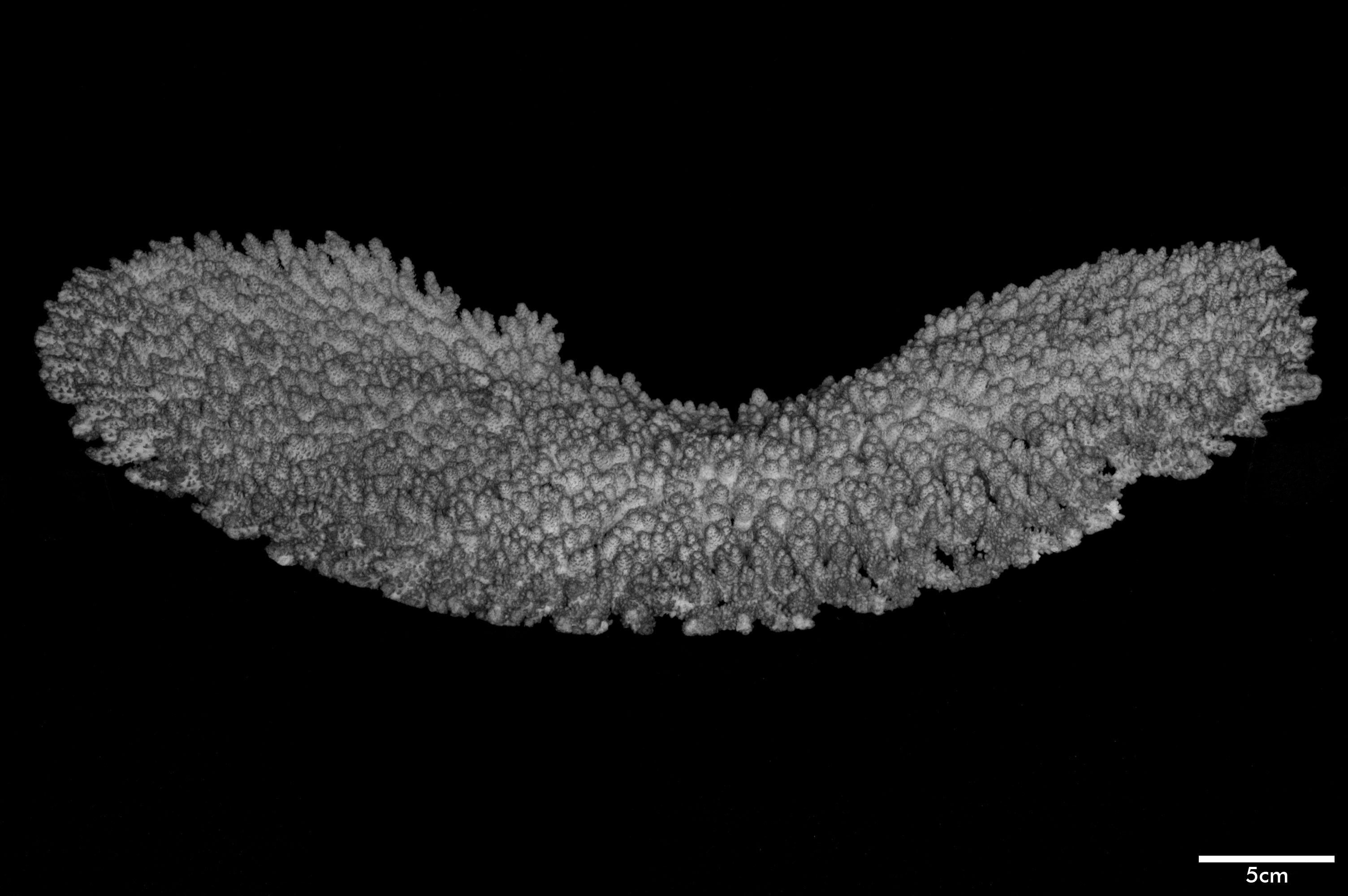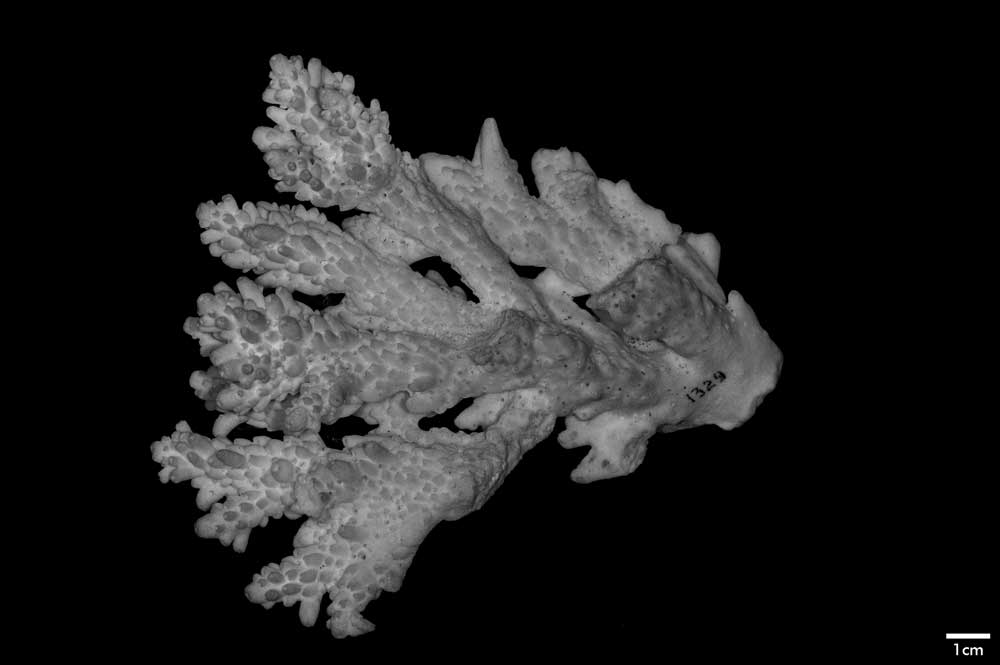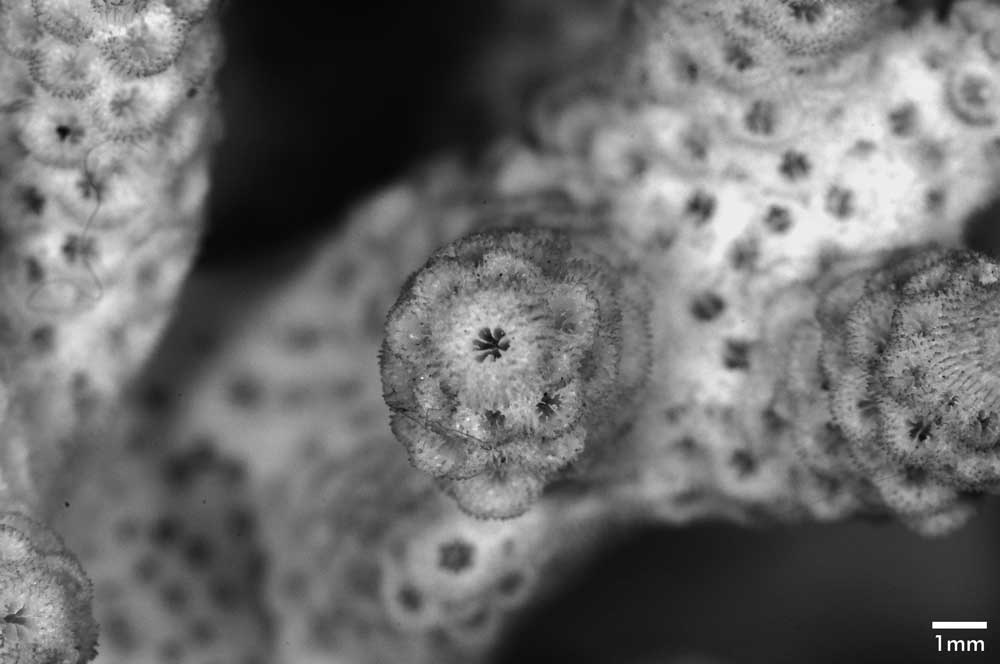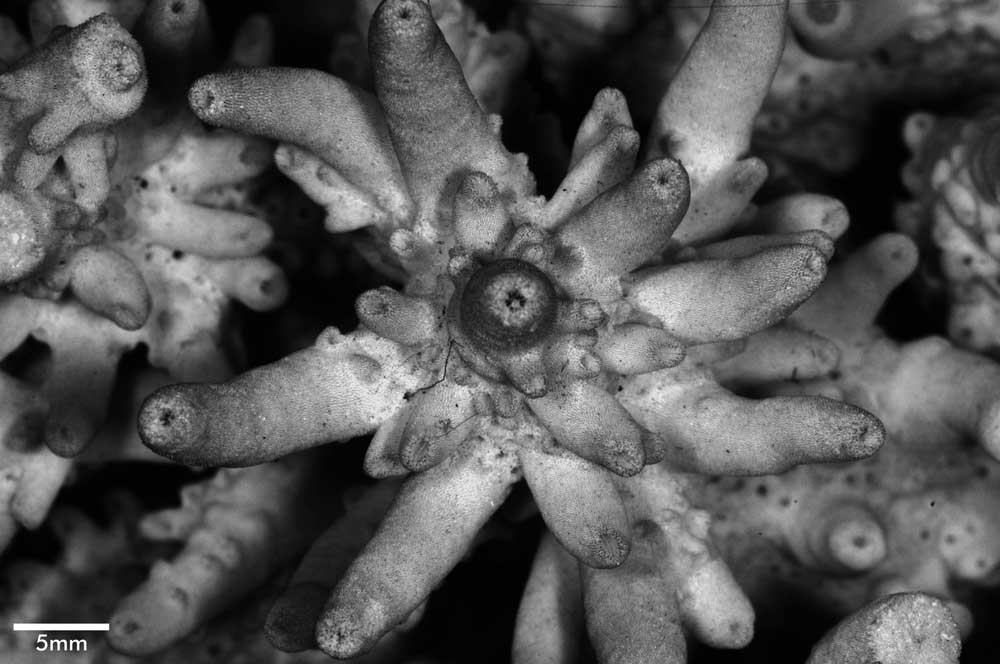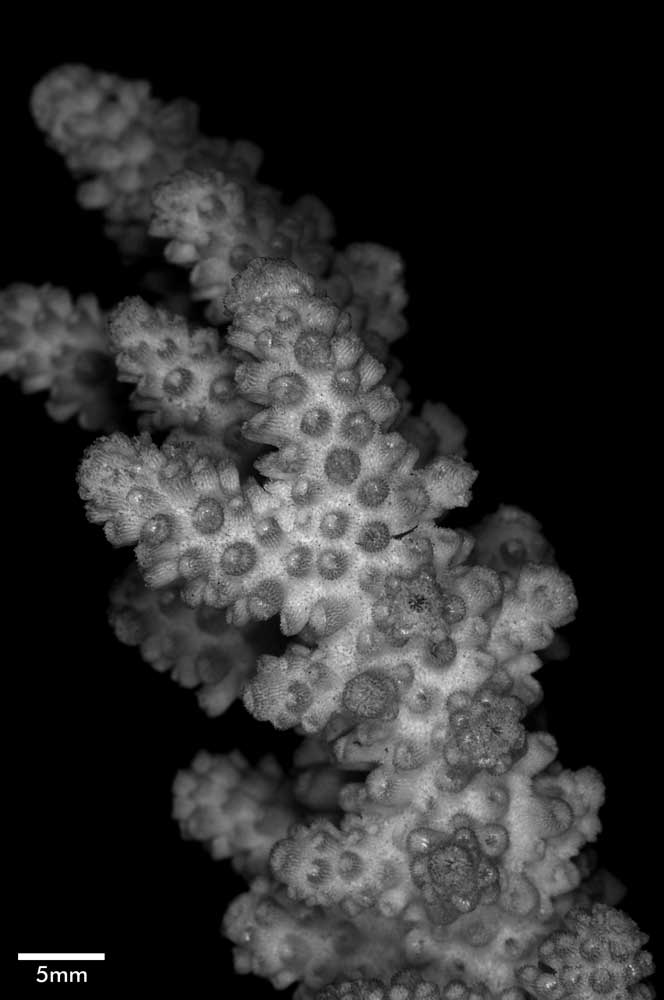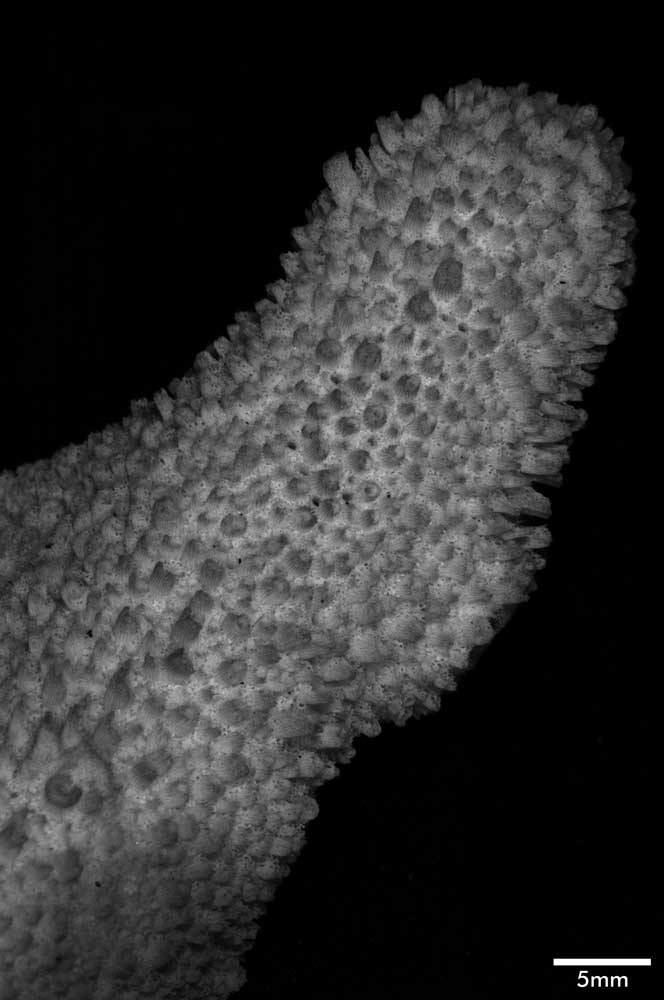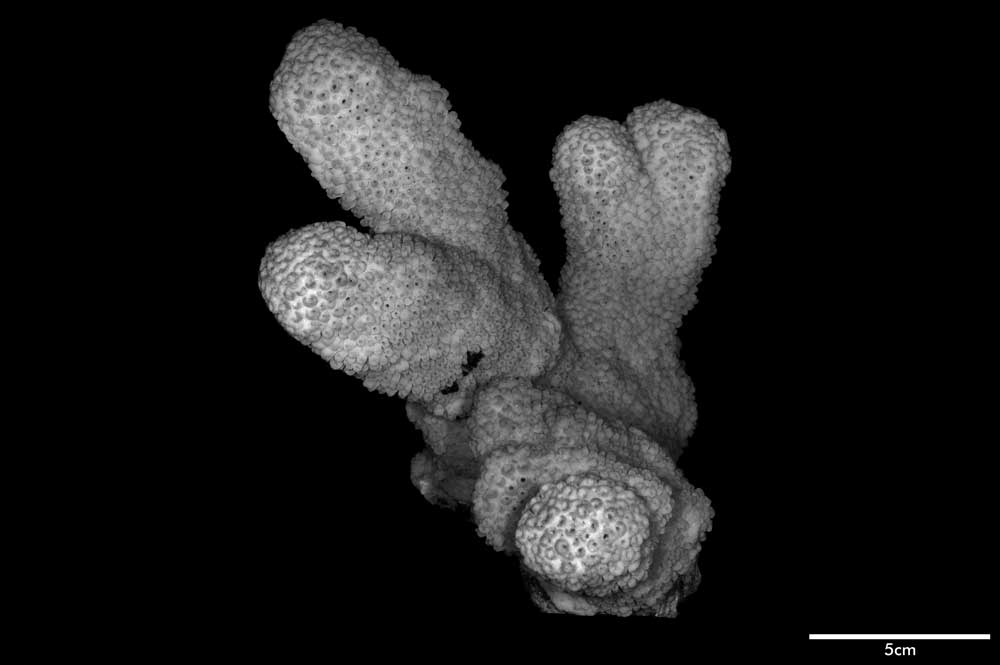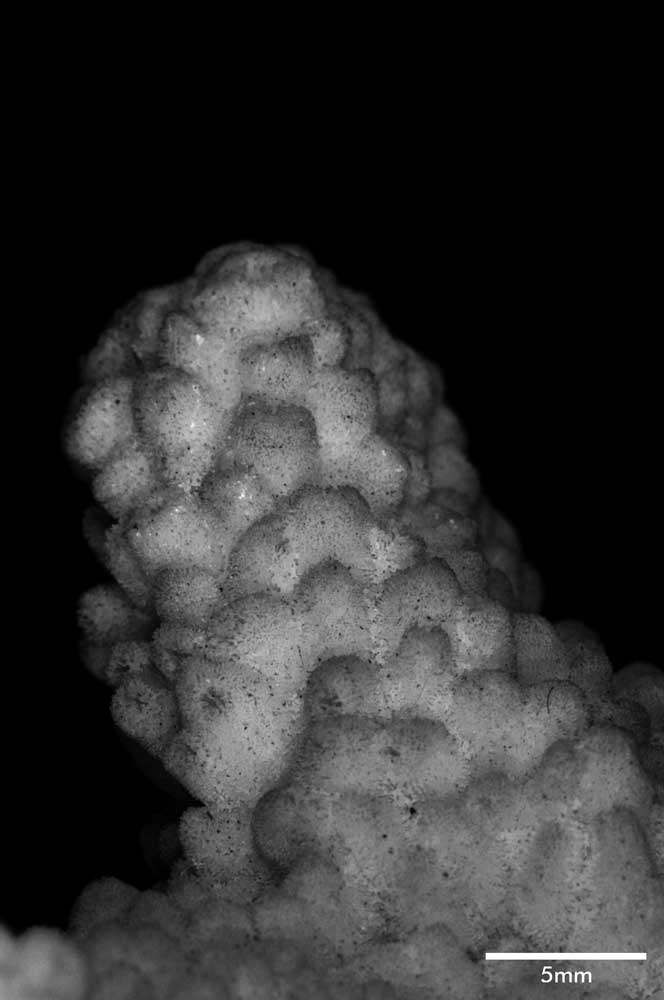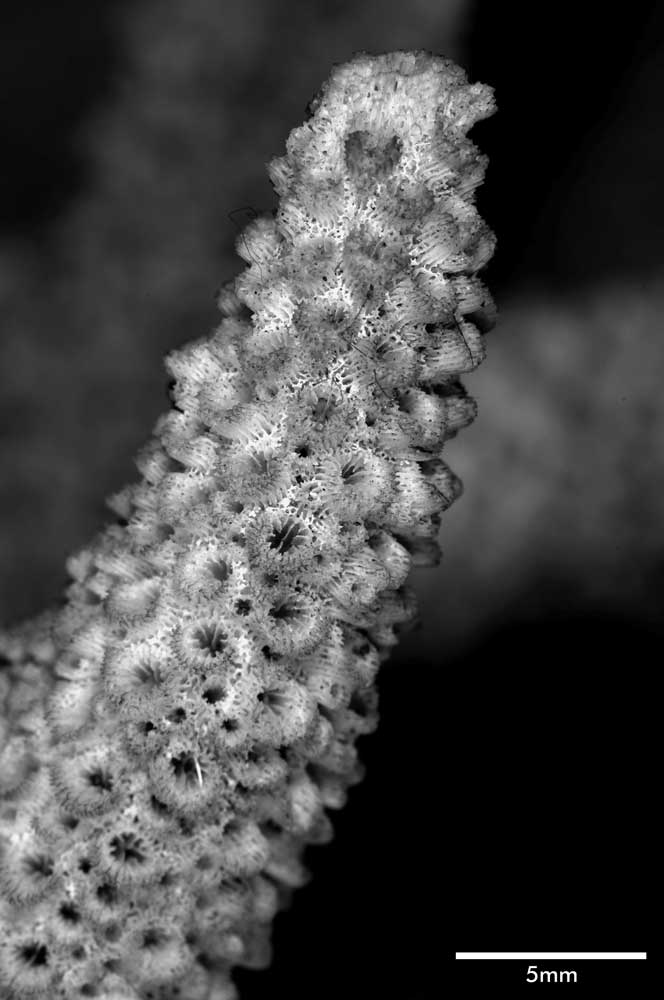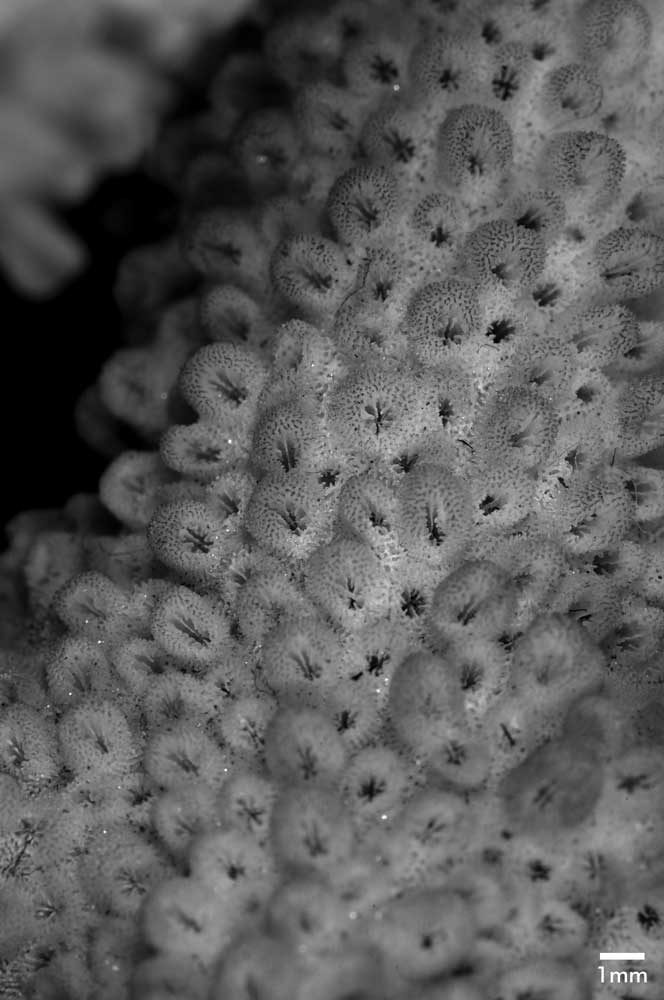Acropora plana
Nemenzo, 1967
Corallum extensive, flat, prostrate; 5.5 cm thick. Branches irregular in diameter, angular or flattened in certain portions; mostly divided into dorsal branch bearing numerous tall branchlets and ventral branch with few branchlets; complexly coalescent into network but not into plates. Upper branchlet simple or proliferous, the apical portion bearing tall, tubular, bud-bearing corallites which may become as conspicuous as axial corallites; mostly arcuate; apices 10-12 mm apart; up to 3-3.5 cm high, 4-5 mm wide, scarcely tapering; their tips almost even. Branchlets on lower surface very few, many resembling stumps; elongated ones oblique, following direction of growth of corallum, with radials distant and almost verruciform.
Axial corallites cylindrical but apical portion often constricted; basal diameter 2 mm, apical diameter 1.5 mm, exsert 2-3 mm, wall thin, less than calicinal radius in thickness, edge plane, outer surface strongly costate, the costae wider than thickness of wall, continuous down into sides of branchlets. Primaries very broad only slightly short of calicinal center, directives always convergent, dividing calicinal fossa into 2 compartments. Secondaries slight, occasional.
Radials on lower surface of branches very distant, irregularly disposed, subimmersed or slightly elevated on one side; 1 mm or less in diameter. Radials on upper surface of branches also irregularly disposed but closer; 1.5 mm diameter, lower wall slightly raised so corallite become nariform. Radials on apical half, or less, of upper branchlets elongated; closely appressed, ascending, trowel-shaped; tip of lower lip acuminate; up to 5 mm long, 1.5 mm wide, wall costate in young corallites, costo-echinulate in older corallites; very projecting lower lip reticulate, fragile. In basal portion of branchlet, corallites lower, regularly tubonariform or nariform. Septa of corallites on branchlets irregularly, usually poorly developed except directives (especially lower one) which are always conspicuous; those of corallites on branches have well developed primaries and 2 or more small secondaries.
Intercalicinal areas dense, reticulation obscure except in few areas; meshes small, distant; thread broad, echinulate; echinules in rows in most areas. Surface generally rough.
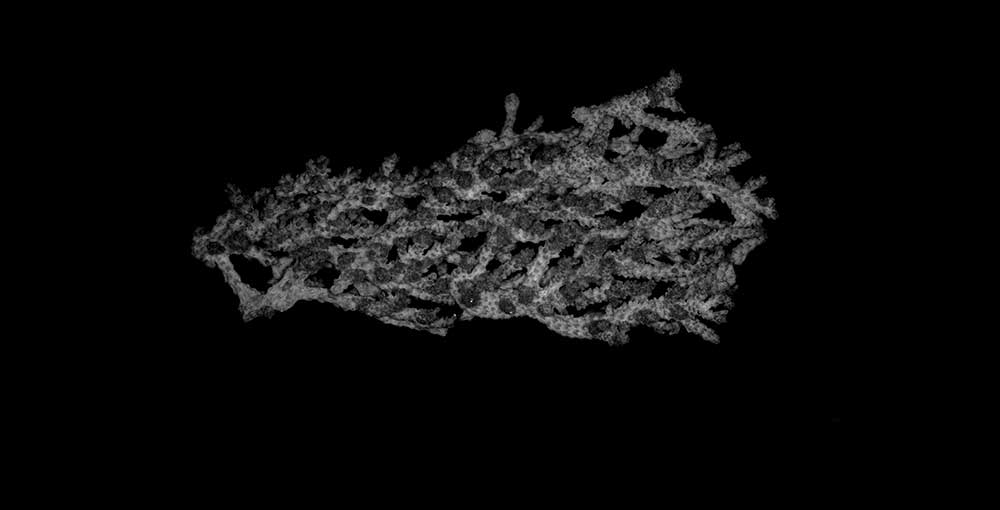


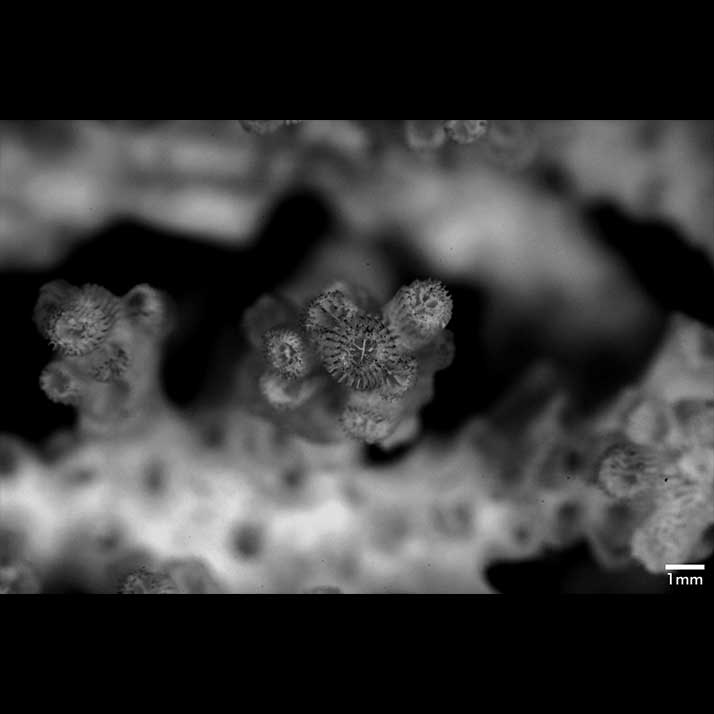




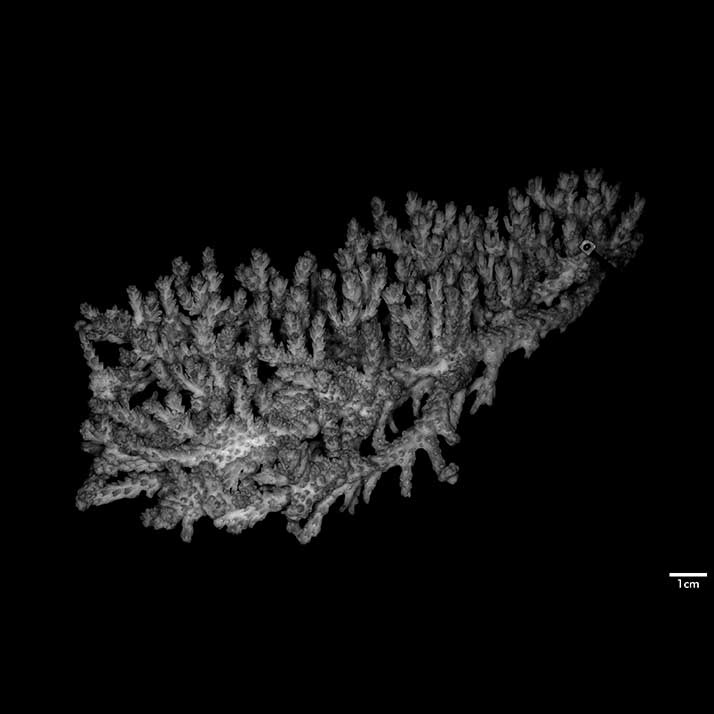
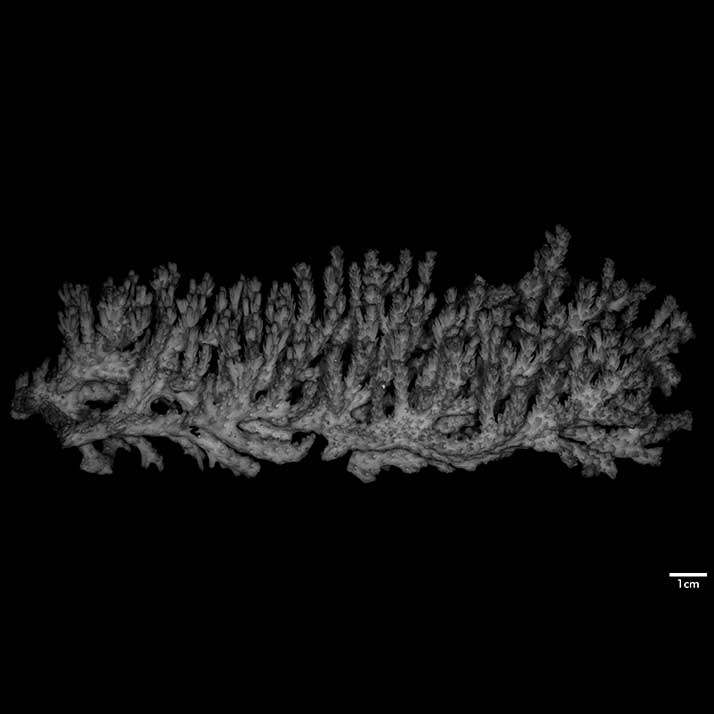
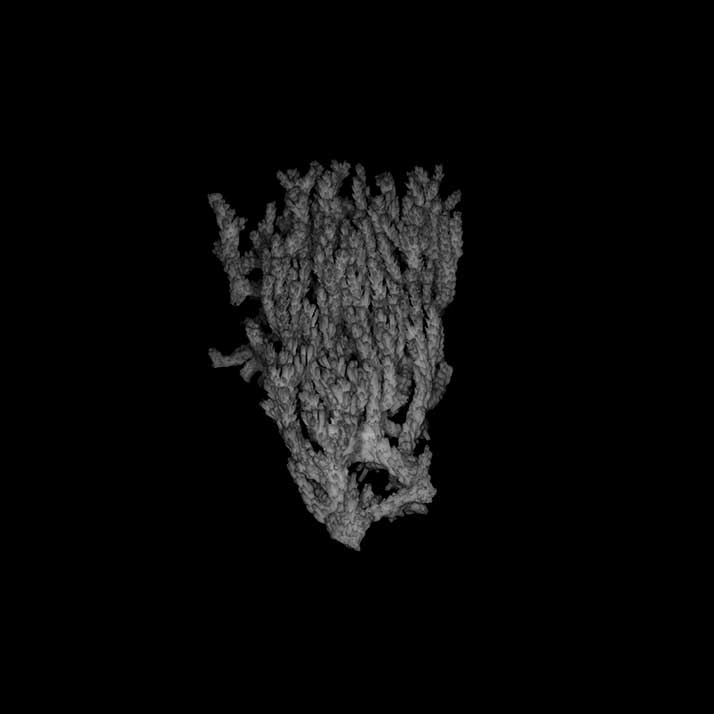


 Type Specimen Location:
Type Specimen Location:  Material:
Material:
